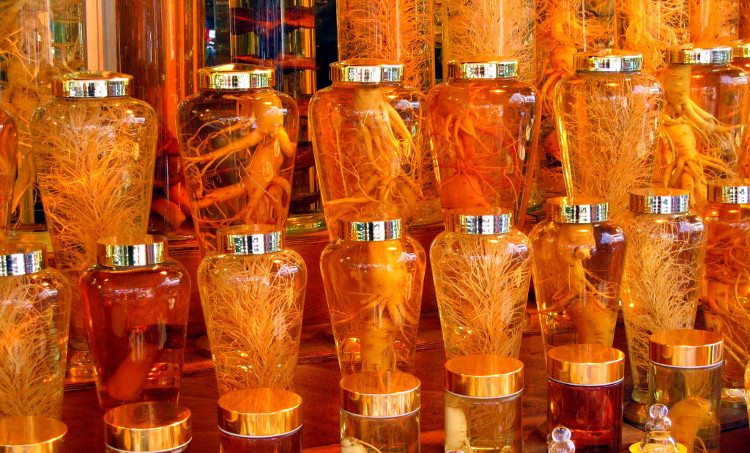The secret of world-class ginseng production, collecting billions of Korean dollars
After harvest, ginseng soil is "rested" for 10 years to recover before the new crop; The product must go through 10 steps of preliminary processing and be divided into 3 levels of natural, geographical, beneficial . These are two of the standards that the largest ginseng corporation in Korea applies to products of international level.
More than $ 1 billion of ginseng sales every year
In terms of production, Korea ranks second in the world in ginseng production. In 2009, Korean ginseng output reached 27,480 tons, compared with 44,749 tons of China. However, Korean products dominate the global market.

Pickled ginseng products in bottles sold in Seoul, Korea.
In 2009, ginseng brought about $ 1.14 billion to the country, while China only reached $ 619 million. Any kind of ginseng product can be found in Korea, from warehouses, street shops, retailers, supermarkets, pharmacies, traditional markets to online stores.
Ginseng is consumed in 4 forms: fresh ginseng, white ginseng (white ginseng), red ginseng (red ginseng) and dried ginseng. Besides, red ginseng is considered as representative representative of Korean ginseng, accounting for 70% of the domestic market share and 15% of export sales.
Korean Ginseng Group (KGC) - the company that grows and produces the largest ginseng in the country of kimchi - exports red ginseng to 60 countries and territories around the world.
Quality control tips
In order to keep credibility, ginseng quality control is considered a key factor.
Ginseng is grown under strict procedures, minimizing agricultural chemicals. Employees check the fields every year.Ginseng is harvested after 6 years - the time when precious ingredients have the highest content. The post harvest land has become barren so it is not allowed to grow ginseng for the next 10 years.

Fresh ginseng.
Harvesting is also closely monitored. The staff went to the farms to observe the entire harvesting process to ensure farmers did not steal or blend ginseng from elsewhere. They also followed the truck carrying ginseng to the processing factory so that no ginseng was lost.
The preliminary process goes through 10 stages , complying with strict safety regulations. First, ginseng is cleaned with ultrasound and high pressure, steamed with high temperature and pressure for a period of time depending on the size and shape of the tuber. Then, ginseng is naturally dried for 2-3 weeks and then trimmed and rearranged.
The classification process is carried out in room i - where people shine lights on ginseng to determine the density and classify according to 3 levels: Thien (Heaven), Dia (Earth) and Loi (Good) , in which Thien is the highest level. Finally, ginseng is brought to moisture and packaged.
- 4 types of famous ginseng in the world
- Unexpected consequences when using ginseng in the wrong way
- Singapore Science 'sickness'
- Side effects of ginseng that you do not know
- North Korea claimed that the study was successful without drinking alcohol
- Ginseng extract helps increase resistance against many influenza viruses
- Nghe An discovered more precious ginseng species
- Clonal seeds of Ngoc Linh ginseng
- New success on clonal ginseng breeding
- Preserving and developing Ngoc Linh ginseng in Kon Tum
- The truth about creatures saves billions of dollars
- Revealing Korean beauty secrets
 'Fine laughs' - Scary and painful torture in ancient times
'Fine laughs' - Scary and painful torture in ancient times The sequence of numbers 142857 of the Egyptian pyramids is known as the strangest number in the world - Why?
The sequence of numbers 142857 of the Egyptian pyramids is known as the strangest number in the world - Why? History of the iron
History of the iron What is alum?
What is alum?